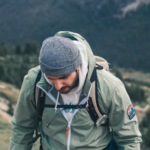One of the most memorable experiences that most people have is a “car camping” experience. We frequently talk about car camping, and know this phrase can be confusing for certain.
What is the definition of car camping? What suggestions can we offer to those new to camping? What can you do to ensure that you will have a pleasant camp experience in your car? For more information, learn more!
There are two commonly agreed-upon definitions of camping in a car. The most commonly recognized definition is that you camp in a spot that allows you to drive your vehicle.
Many people think camping in a car is staying in the car. The common misconception is that sleeping in your car vs sleeping in a tent would be more comfortable and secure. The thing that people aren’t aware of is that a high-quality tent is waterproof and can be able to withstand moderate to heavy rainfall. A high-quality sleeping pad and sleeping bag are more comfortable than camping in your car. They will provide warmth as low as zero.
If you are camping by car it is when you load everything you need for the journey in your car, drive into your camping area and put your tent in the designated space. Many call car camping “base camping” or “tent camping.” The benefit of camping in a car is your chosen campsite’s convenience. Because your campsite is right next to your car, there’s no reason to sacrifice “luxury” items that make your camping experience more enjoyable.
If you’re hiking to a campsite, you likely don’t wish to take a cast iron dutch oven along with a propane stove and the 10lb tent. If you’re camping in a car, you have a variety of possibilities at hand and could make camping more enjoyable for those new to camping.
How Do I Start Car Camping?
Beginning your journey to car camping is just as easy as gathering your camping equipment and heading to an area state park campsite. This is our checklist for car camping to aid you in getting going. We generally recommend using an experienced camper on your first trip. A more experienced and knowledgeable camper will guide you through the process and can provide camping equipment to make your trip more enjoyable. They’ll also assist you to quickly understanding the proper manners for camping to ensure that you’re not “that guy.”
Checklist For Car Camping
Car camping could give you a false sense of security. As you’re driving your car, it’s easy to get the illusion of security. Follow the steps below to ensure you enjoy an enjoyable and safe camping journey.
1. Be ready
The right food or shelter and clothes can make an enormous difference in your life. If you’re prepared with normal weather conditions for your trip to the campground in your car You’re on your path to a memorable camping experience. Car camping isn’t bound by weight but due to the dimensions of your vehicle So, make sure you have enough gear to handle every weather condition. In time, you’ll be able to discern which items you need and which you do not.
Food – Make sure you know what food you will take, how you plan to cook, and the required equipment. Cooking on a campfire or camp stove isn’t the same as cooking in your home kitchen, so be prepared to devote extra time to making and cleaning up after your meals.
Shelter – Make sure your tent has enough stakes and guylines to secure the tent and the rain fly. It’s possible that you don’t need additional guylines. However, it is better to have them available in the event of severe winds.
Clothing – Keep an eye on the weather and ensure you are equipped with the right camping gear appropriate for the season and the weather forecast. Merino wool and synthetic-based clothes are great items that can be worn all year. A waterproof shell is an excellent outerwear item that will keep you dry and block out the winds. Add clothing items that you own for your mid-layers so that you don’t pay a lot of money to dress for a camping weekend.
Cleaning – Make sure you plan how you will get a shower when car camping because most remote locations don’t have public showers.
2. Test your gear before getting to the campsite
Don’t delay getting to the campground to test your camping equipment. If you’re borrowing equipment from relatives or friends, ask them to guide you through the use of the equipment and then put it in place at home before getting to the campsite.
You do not want to arrive at the campsite and discover that you do not have a hammer on hand to make your stakes go into the soil. You’re camping in a car and can visit a local shop to buy equipment. However, that’s not the way you’d prefer for your day during your camping adventure.
3. Get to the campsite early
Camping is significantly simpler in the light of the day. Your lantern and headlamp are only able to provide illumination. In the dark, setting up could result in setting up in an unideal location and in the wrong orientation.
Make sure you choose the most level part of the campsite. Do not set up your campsite beneath the shade of a tree. The falling tree branches, fruits, nuts, and sap could disrupt sleep. If you’re at an established camp, it’s easy to identify the ideal camping spot because others will likely have crowded the area down.
Clean your tent of sticks, rocks, or other debris that could damage your tent’s footprint.
Place your tent’s door(s) or privacy fence according to. The wall of your privacy tent should be oriented towards the east, and keeping your door from campers provides more privacy.
If you’re on a slope put up your tent or sleeping bags so that your head is higher than your feet. If you place your sleeping bags in a parallel position with the slope you’ll slide downhill when you’re prone to roll, and one of you will be squeezed. If you place your head on those feet, you might suffer from a headache.
Take a look at our checklist for car camping to determine what you’ve got. If you have questions you can stop by the shop or give us a phone email or drop us an email on Facebook.

